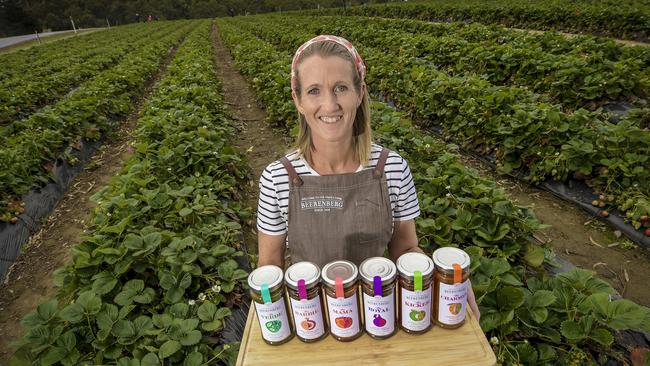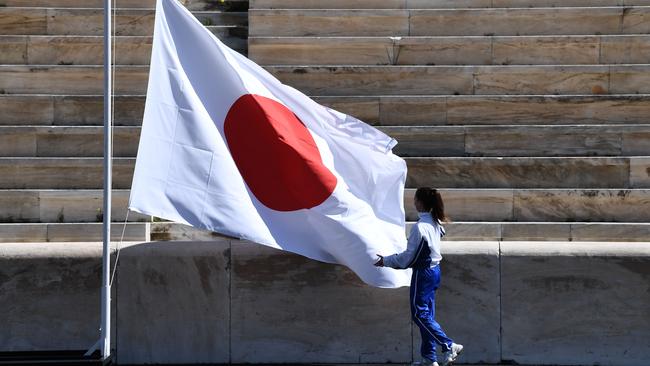SA targets key trade markets as China tensions rise
As China threatens payback for Australia’s decision to scrap Victoria’s Belt and Road agreement, we take a look at some of the other big trade markets SA is targeting.
SA Business
Don't miss out on the headlines from SA Business. Followed categories will be added to My News.
South Australia is targeting the United States and Japan for new trade opportunities as local companies look to diversify amid rising tensions with China.
South Korea and Japan are target markets for future renewable energy trade, including hydrogen, while France and the US are considered big opportunities for the state’s defence industry.
Australia is also close to signing a post-Brexit free trade deal with Britain after Federal Trade Minister Dan Tehan held negotiations with his counterpart in London this week.
Countries like Canada, Saudi Arabia and Poland are also being flagged as potential growth markets, according to Food SA’s analysis of Global Data research on trade trends for the next three years.
Indonesia, the Philippines, and Hong Kong are pegged as other potential growth markets for key products including savory snacks, meat, dairy and soy, confectionery and cereals and bakery goods.
“We see Japan as being really important,” Food SA chief executive Catherine Sayer said.
Ms Sayer said SA citrus, almonds, abalone and tuna were already strong exports to Japan, but the country had also been identified as a top growth market for dairy and soy, cereals and bakery goods.
SA has also been ramping up its focus on its second biggest trading partner, the US, after exports declined in recent years and fell to their lowest in two decades in 2020.
Nine iconic SA brands recently signed a deal with Texan high-end supermarket store, Central Market.

State Trade Minister Stephen Patterson said: “While SA exports to the US in recent years haven’t been as strong as they were a few years ago, we’ve identified it as a market that requires more focus – which is why we set up the office in Houston and established a presence in New York City.”
“Canada has been identified as a market with the potential for more SA wine exports, as well as opportunities in terms of SA’s burgeoning gaming industry, with Canada a major global player in gaming,” Mr Patterson said.
“We also see potential in India, although there will be more required in that particular market, but it’s a long term opportunity because of its sheer size in terms of population.”
The State Government also this week appointed a new Singapore-based trade representative for the South East Asian market, in addition to offices already established in China, Japan, the US, the Middle East and the UK, and representatives in South Korea, India and Malaysia.
Virtual wine and food tasting events were key pitch strategies developed during 2020 to market SA brands to overseas buyers during COVID-19.
Tastings are currently underway in the UK, Malaysia and Dubai.

Business SA CEO Martin Haese said the challenges of exporting to China at present were “concerning” but there was a ”vast array” of other markets open to the state and diversification opportunities could be seized “with the right support”.
“With the vaccine rollout ahead of schedule in countries like the UK and US, this presents enhanced trade opportunities for South Australian businesses,” he said.
“Zoom meetings can get us some of the way, but we need to get borders open as soon as possible to fully realise these prospects.”
America would be a market for “premium and luxury” SA products, Ms Sayer said.
The US is also a top target market for savory snacks and bakery and cereal goods, Food SA’s analysis of Global Data research shows.

Canada was also a strong market for savoury snacks, meat, dairy and soy, while Hong Kong was an opportunity for meat exporters.
Poland was a top market for the confectionery sector, meat, dairy and soy, with health-conscious consumers looking for benefits such as a reduced energy value, sugar-free ingredients, clean label claims, according to Food SA‘s research.
Indonesia was a high potential market for savoury snacks, and the interest in healthier, cleaner snacks was an opportunity for South Australian snack manufacturers, Ms Sayer said.
Despite tensions between Beijing and Canberra, Ms Sayer said: “We still see China as being an important market for South Australian food and beverages.”
SA exported $178m worth of goods to China in January and $213m in February, Australian Bureau of Statistics data shows.
SA’s exports to China surpassed $3.3bn in 2020, up from $2.6bn in 2018, while Japan declined slightly to $444.9m in 2020, down from $743.2m two years before.
The US market took $890.6m of goods from SA in 2020, down from $1.02bn in 2018.
Saudi Arabia took $114m last year, up from $56m in 2018 but down from $403m in 2013.
SA sent Indonesia $234.4m in 2020, while Canada soared to $617m, up from $303m in 2018.
The Philippines took $216m of SA goods last year, Poland took just $11.2m, while Hong Kong took $235.6m.


